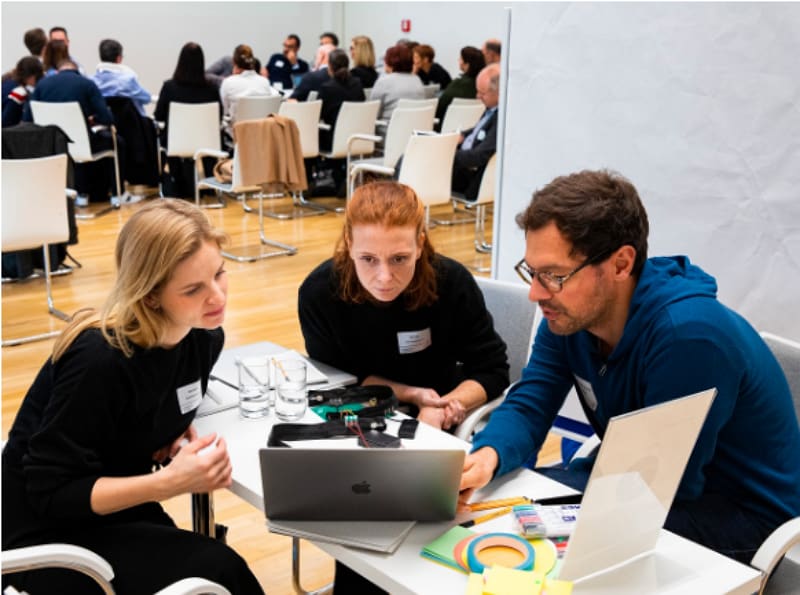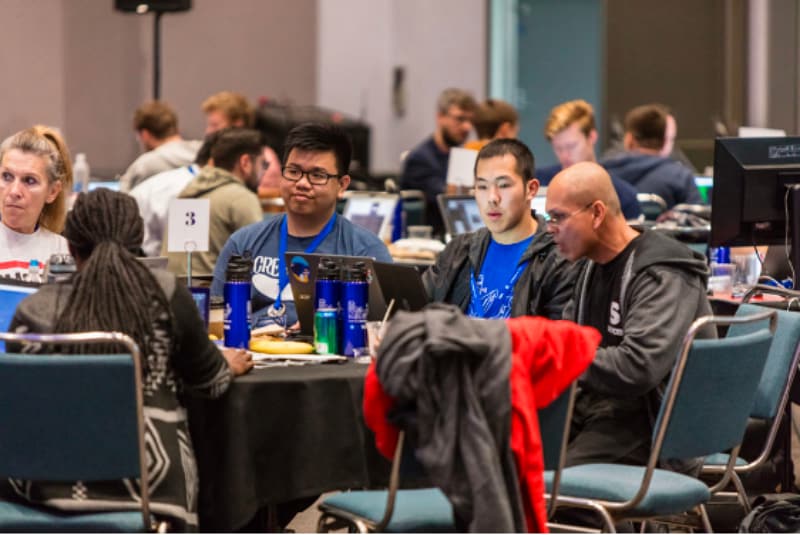What Will Your First UI/UX Hackathon Be Like?
One of the UI/UX education challenges is addressed by the emergence of UI/UX-driven hackathons by offering participants a chance to learn while creating. UI/UX hackathons have been exploding in popularity. They're a great way to immerse yourself while collaborating with other like-minded, passionate designers in the end-to-end UI/UX workflow. In this piece, we will discuss what UI/UX hackathons are, why they're valuable, and how to make the most of the experience.
- Part 1: What is a UI/UX hackathon?
- Part 2: Why do people participate in UI/UX Hackathon?
- Part 3: What will you experience in a UI/UX Hackathon?
What is a UI/UX hackathon?
UI/UX hackathons are competitive design events that solve problems and contribute to a meaningful, short-term project. Here are some critical points about UI/UX hackathon:
Timeline – It can take up to 72 hours; most of them are all-day competitions. They can also be for three hours (these are commonly called mini-hackathons). They are mainly held individually, but virtual ones are also present.
Host – Anyone, including well-established companies or enthusiastic designers, could host them all over the world.
Costs: UX hackathons are sponsored by so many, but even paid hackathons are reasonable.
Participation – expect 80 to 300 participants anywhere. Most of them work in 3-5 groups, but some also compete alone.
Challenge – The host usually sets a topic and provides guidance on how to do this for participants. Designers can understand the challenge as they like and conduct research to bring out the final product.

Why do people participate in UI/UX Hackathon?
Now that you know the meaning of the hackathon, you must be curious about why people participate in such events. Well, worry no more as we've got you covered.
- Important challenges: The challenges of the UX hackathon range from data transparency to the environment. It encourages designers to be innovative and reflect on the consequences of the problem in a broader context. These significant challenges transform them into excellent portfolio case studies.
- Friendly environment for beginners: The host of UX hackathons would like successful designers, so most of them feature workshops to develop know-how built into their workflows. They facilitate interviews with users and discuss best practices in prototyping in a short time. Mentors will be present for guidance nearly always.
- Real-life issues simulation: UX in the real world is designed to synchronize user objectives with business objectives. These events aim to simulate real-life problems so that participants learn about incorporating business goals into their workflow.
- UX community exposure: UX hackathons are a wonderful collection of wonderful people who help future designers to work as catalysts.
Fun Fact! One of the best characteristics of a UX hackathon is the guaranteed delicious food and plenty of coffee to keep participants sufficiently fed to the day.
What will you experience in a UI/UX Hackathon?
A hackathon is not that easy as it sounds. Many things must be kept in mind while planning to be a part of this wonderful event. Here is a go-to list that shall take you through the final day.
Things to do before the hackathon
Upon registration, you will probably be contacted by the organizers and send out new information and updates on the event, such as the calendar, speakers, access to slacks or groups, the location details, etc., so you can be all right. Verify that you are disconnected for how many hours and take care that you bring your stuff. The Necessities: Your laptop, charger and mouse, Your phone and charger, a mouse.
During the Hackathon
The sponsors and organizers are different from any hackathon but bear in mind that the first day is like your first touch, in which you will see the kind of environment you can encounter.
On Day 1:
- Relish the food
- Listen to the introductory talks and attend the orientation program
- Meet and socialize with other participants.
- Think of the competing proposals.
- Get to know the details.
Without breakfast, please do not start working. Encourage the party to split and have nice snacks. Yes, often in the planning process, you are so absorbed that you're not eating.

Team
To build your squad, you must find a cool community. You can see some people joining hackathons for fun, some with curiosity, and others with the idea of winning the competition. Some are newbies, some are experienced. Tell yourself what you do to be competitive and what you expect from this. To escape annoyance, find the correct match for you is the secret. Don't panic if you're not such a party butterfly. Many people are waiting for the interaction, so don't be afraid to speak to someone, or just wait for the organizers' orders, because there will still be people who didn't have the time to find the squad. You should still work together to meet more people if you can contact a friend or someone you previously met before. Teams usually vary from 4–6, but differ on the organization.
On Day 2:
You've got a squad now. Then you start dreaming about what you are constructing and what your job and responsibilities will be. Any fundamentals should be ready for the second day:
- A prototype for the presentation (if required)
- A name for a squad
- A commodity for a team
Take notes with other ideas and cast votes if the one you choose to pick isn't recognized. Documenting the process is an essential process since it might help when reflecting on the day's work. You could be at a party that has the idea now, and it's cool. Your job as a hackathon UX designer poses problems and finds minimum proof that the theory is legitimate to justify questions. Focus on the product and schedule needs if your job is to be entirely visual. It is effortless to spend time talking in limited depth; even if you understand you need to hurry to submit your project, it's not the perfect one.
Final Presentation
The team should pick a participant to present the pitch. Some people have the innate talent of well speaking in public, so encourage them to experience the magic. Keep your pitch short, sweet, and succinct.
Wondershare Mockitt is one of the best tools to help you develop projects effortlessly and straightforwardly and to be able to refine and also demonstrate the concepts you want to bring out to your client. It allows you to act effectively with the team on creating things, and it helps the team work together on the same page and improvements to be made the teammates can notice that as prototypes are produced in real-time.
There is a catalog full of templates and sets that you can use and modify according to the client's desire to use the ones you want.


